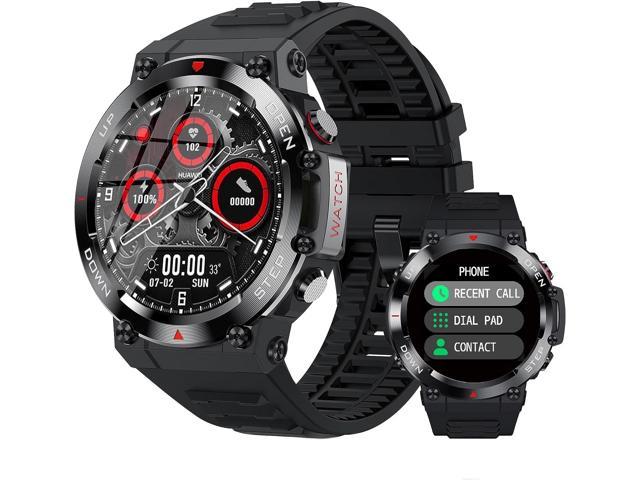Have you ever found yourself in the middle of a busy day, only to glance at your smartwatch and see that dreaded low-battery warning? You’re not alone—did you know that nearly 30% of smartwatch users report battery life as their biggest frustration? As wearables become integral to our daily lives, the demand for longer-lasting battery solutions is more pressing than ever. In this post, I’ll dive into the current challenges we face with smartwatch battery life and explore the exciting innovations on the horizon that promise to enhance both energy efficiency and our overall user experience. Let’s embark on this journey to a future where your smartwatch keeps up with your active lifestyle, not the other way around!






Current State of Smartwatch Battery Technology
Smartwatches have become indispensable tools for many of us, seamlessly integrating fitness tracking, notifications, and even payment options into our daily lives. However, one of the most critical aspects of a smartwatch is its battery technology. Let’s delve into the current state of smartwatch battery technology, discussing existing technologies, typical battery life, and the factors that impact longevity.




Existing Battery Technologies
Lithium-Ion Batteries
Most smartwatches on the market today are powered by lithium-ion (Li-ion) batteries. These batteries are popular due to their high energy density, lightweight design, and relatively low self-discharge rate. For example, the Apple Watch Series 9 features a Li-ion battery that supports a full day of usage on a single charge.
Key Features of Lithium-Ion Batteries:
- Energy Density: Can store more energy in a smaller package.
- Low Self-Discharge: Retains charge when not in use.
- Long Cycle Life: Can withstand hundreds of charge cycles.
Solid-State Batteries
While lithium-ion technology has been dominant, newer alternatives like solid-state batteries are on the horizon. Solid-state batteries use a solid electrolyte instead of a liquid one, which can improve safety and energy density. Companies like Samsung are exploring solid-state technology for future devices, which could lead to smarter, longer-lasting wearables.
Benefits of Solid-State Batteries:
- Higher Energy Density: Potentially 2-3 times that of traditional batteries.
- Improved Safety: Less likelihood of overheating or catching fire.
- Longer Lifespan: Can last longer than traditional batteries without significant degradation.
Typical Battery Life of Current Smartwatches
Battery life can vary significantly among smartwatches due to various factors including display technology, processing power, and app usage. Here’s a snapshot of the battery life for some popular models:
| Smartwatch Model | Battery Life (Typical Use) | Display Technology | Notable Features |
|---|---|---|---|
| Apple Watch Series 9 | ~18 hours | Retina LTPO OLED | Always-On Display, ECG, Fitness Tracking |
| Samsung Galaxy Watch 5 | ~40 hours | Super AMOLED | Health Monitoring, GPS, Sleep Tracking |
| Garmin Forerunner 955 | ~15 days | Sunlight-visible MIP | Multi-GNSS Support, Advanced Training Features |
| Fitbit Versa 4 | ~6 days | AMOLED | Sleep Score, Daily Readiness, Health Metrics |
Factors Impacting Battery Longevity
Display Technology
The display is one of the most energy-hungry components of a smartwatch. AMOLED screens, like those on the Samsung Galaxy Watch 5, use less power when displaying darker colors, as individual pixels can turn off completely. In contrast, traditional LCD displays consume the same amount of energy regardless of the image being shown. This means that smartwatches with OLED displays may have better battery performance during extended use.
Processing Power
The processing power of a smartwatch can also significantly impact battery life. More powerful processors, like the Apple S9 chip found in the Apple Watch Series 9, can handle complex tasks efficiently but may drain battery life faster during heavy usage, such as when running resource-intensive apps or navigating GPS. Meanwhile, devices focused on fitness tracking, like the Garmin Forerunner 955, are optimized for battery efficiency to support longer usage times.
App Usage
The number of apps running in the background can also affect battery life. For instance, if you’re using multiple health tracking apps or third-party notifications on your smartwatch, you may experience quicker battery depletion. Some smartwatches allow you to customize app settings to optimize battery life.
Practical Tips for Maximizing Battery Life
- Adjust Display Settings: Use a dimmed display or turn off the always-on feature.
- Limit Notifications: Reduce the number of apps sending notifications to your watch.
- Update Software: Keep your smartwatch updated for the latest battery optimization features.
- Utilize Battery Saver Modes: Many smartwatches offer a low-power mode that limits functionalities to extend battery life.
By understanding these facets of smartwatch battery technology, users can make informed decisions about their device choices and management practices, ultimately enhancing their smartwatch experience.
Innovations on the Horizon
As smartwatches continue to evolve, one of the most pressing challenges remains battery life. Users want devices that can keep up with their active lifestyles without the constant need for recharging. Fortunately, several exciting innovations are on the horizon that promise to extend battery life significantly. Let’s explore some of these emerging technologies and research breakthroughs.






Energy Harvesting Techniques
Energy harvesting involves capturing and storing energy from various sources in the environment, allowing devices to run longer without frequent charging. Here are a few notable methods:
- Kinetic Energy: Some companies are exploring the use of kinetic energy generated by movement. For instance, Citizen’s Eco-Drive technology harnesses energy from the motion of the wearer to power watches, and similar concepts are being adapted for smartwatches.
- Thermal Energy: Researchers are investigating the possibility of using temperature differences to generate electricity. Devices like the Thermoelectric Generator can convert heat from the body into usable energy that could help keep smartwatches charged throughout the day.
Improvements in Battery Chemistry
Recent advancements in battery technology are also paving the way for longer-lasting smartwatches. Here are a couple of promising innovations:
- Solid-State Batteries: Companies like QuantumScape are developing solid-state batteries that offer higher energy density and improved safety compared to traditional lithium-ion batteries. These batteries not only have the potential to last longer but can also charge faster.
- Graphene Batteries: Another exciting development comes from Samsung, which is working on graphene batteries that promise to be lighter, more efficient, and capable of holding a charge for a longer time. These batteries could significantly enhance the performance of smartwatches like the Samsung Galaxy Watch 5.
Integration with Solar Charging
Solar charging is another innovative approach that could extend the longevity of smartwatch batteries. While some devices already incorporate solar technology, future advancements could make this feature more mainstream.
- Garmin Instinct Solar: This smartwatch features a solar charging lens that uses sunlight to extend battery life. With the right conditions, users can achieve up to 54 days of battery life in smartwatch mode.
- Solar-Powered Wearables: Companies like SunPartner Technologies are developing solar panels thin enough to integrate directly into the watch band or face, allowing for continuous charging as long as users are exposed to light.
Software Optimizations
While hardware improvements are crucial, software optimizations can also play a significant role in extending battery life. Here’s how:
- Adaptive Brightness: Many smartwatches now include adaptive brightness settings that automatically adjust the screen’s brightness based on ambient light. Devices like the Apple Watch Series 8 utilize this feature, helping to conserve battery when high brightness isn’t necessary.
- Low Power Modes: Brands like Fitbit have implemented low-power modes that disable non-essential features when the battery is running low, allowing users to keep their devices functional longer.
- Smart Notifications: Optimizing app notifications can also save battery life. For example, the Google Wear OS platform allows users to customize which notifications to receive, reducing the frequency of screen wake-ups and conserving energy.
Summary of Innovations
Here’s a quick comparison of some innovative technologies and their benefits:
| Innovation Type | Example Product | Key Benefit |
|---|---|---|
| Kinetic Energy | Citizen Eco-Drive | Harnesses movement for power |
| Solid-State Batteries | QuantumScape | Higher energy density, safer |
| Graphene Batteries | Samsung’s Research | Lighter, efficient, longer life |
| Solar Charging | Garmin Instinct Solar | Extends battery life via sunlight |
| Adaptive Brightness | Apple Watch Series 8 | Adjusts brightness to save power |
| Low Power Modes | Fitbit Devices | Extends functionality in low battery |
| Smart Notifications | Google Wear OS | Reduces battery drain from alerts |
With these innovations on the horizon, the future of smartwatch battery life looks promising. As manufacturers continue to push the boundaries of technology, users can expect devices that not only keep pace with their daily routines but also do so with incredible efficiency.
Looking Ahead: Innovations in Power Management
In conclusion, the future of smartwatch battery life is filled with exciting possibilities. Although we face challenges today, emerging technologies and a focus on user-friendly designs are paving the way for significant improvements. I encourage consumers to keep an eye on advancements in battery technology, as they could greatly enhance the smartwatch experience. At the same time, I hope manufacturers prioritize sustainable and efficient solutions, ensuring that our devices not only last longer but also contribute positively to our environment. Together, we can look forward to a future where smartwatches combine exceptional functionality with outstanding battery performance.











